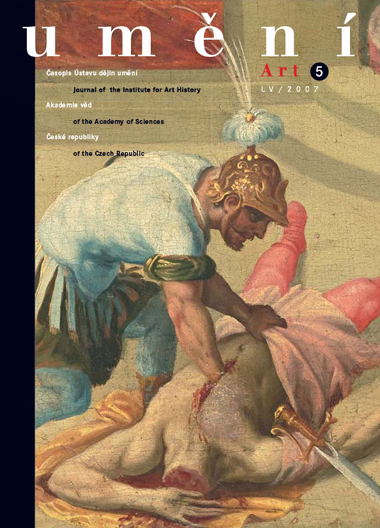Tomáš Winter
Contortionist, Caricature and the Grotesque Body
Contortionist (1931) was one of the earliest oils created by the painter František Tichý during his five years in Paris. The painter returned to this subject matter in further works that reached their peak in paintings made in 1945. For Tichý, the Parisian period was a time of reassessment of his own style as a painter and the development of a highly individual technique based on Seurat-esque postimpressionism. Past interpreters of Tichý's works have already commented on certain elements of tension and ambivalence in his brushwork, enhanced by a particular treatment of light and building of space. Similar aspects are conveyed in the choice of subjects, including the contortionist. This article draws attention to historical examples of treatments of the contortionist figure and to links with the Devětsil movement, which shared with Tichý a strong fascination with circus. The article likewise shows that Tichý's contortionist figure is indebted to a bizarre drawing of two copulating homosexuals, its subversive quality further emphasised by scatological themes. Since Tichý produced other versions of the contortionist theme that allude to the act of excretion, this figure may be understood as a representative of the grotesque body as defined by Mikhail Mikhailovich Bakhtin. Tichý's work thus corresponds in certain points with the art of Jindřich Štyrský and the Surrealists, who were likewise attracted to scatological themes and also with the work of satirical draughtsmen and caricaturists, with a longer tradition of scatological subjects reaching back to the 16th century. Examples of period reviews demonstrate that Tichý's paintings were rich in associative meanings, akin to the perception of Surrealist works and the Surrealist discovery of concrete irrationality. Tichý's works oscillated between social critique in terms of subject matter, a personally engaged self-stylisation and a certain subversiveness that disrupted the conventional meanings of the individual themes.
Full-text in the Digital Library of the Czech Academy of Sciences:
https://kramerius.lib.cas.cz/uuid/uuid:b368789e-539a-4d8b-9199-123609d8209d
< back

